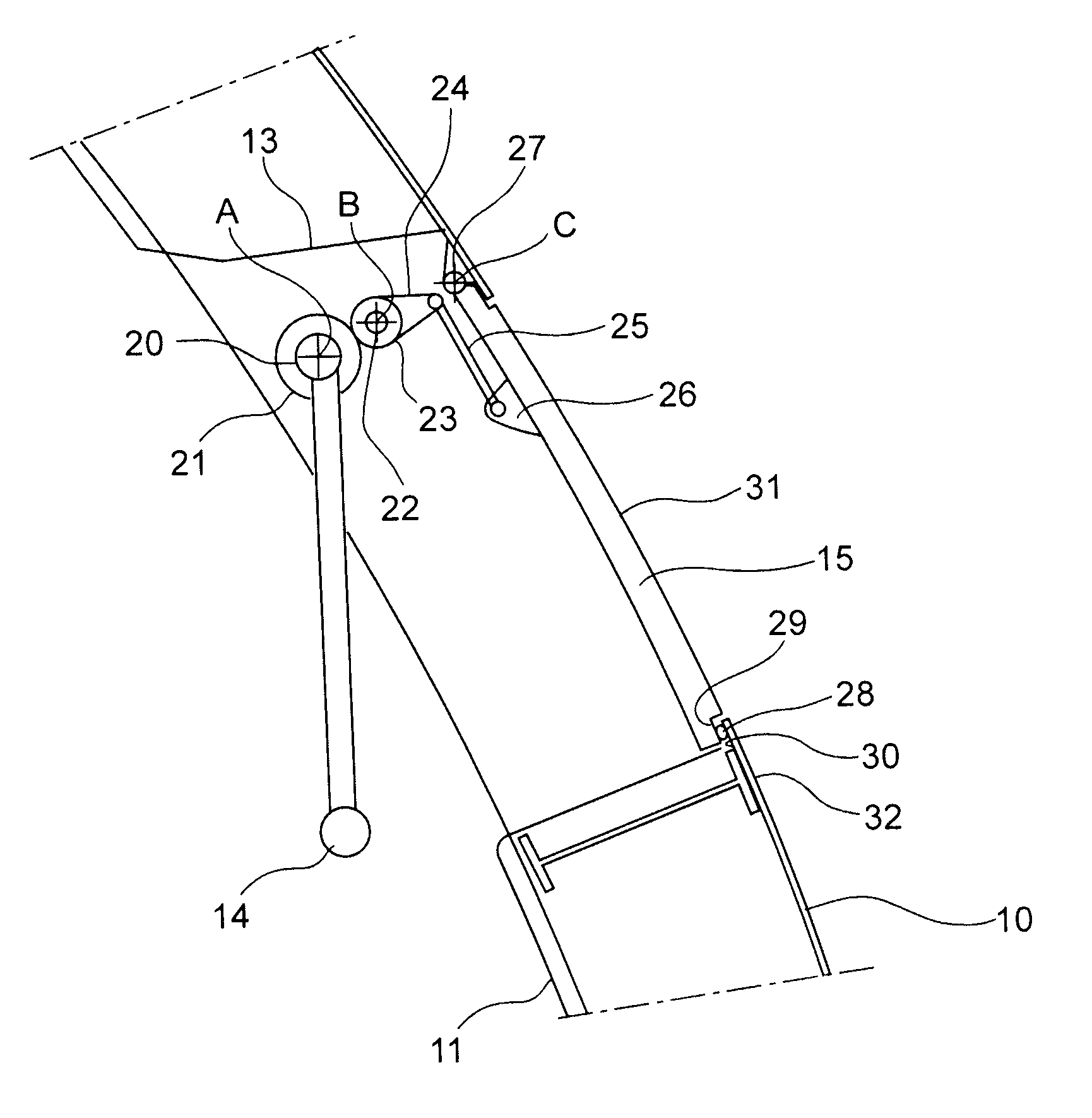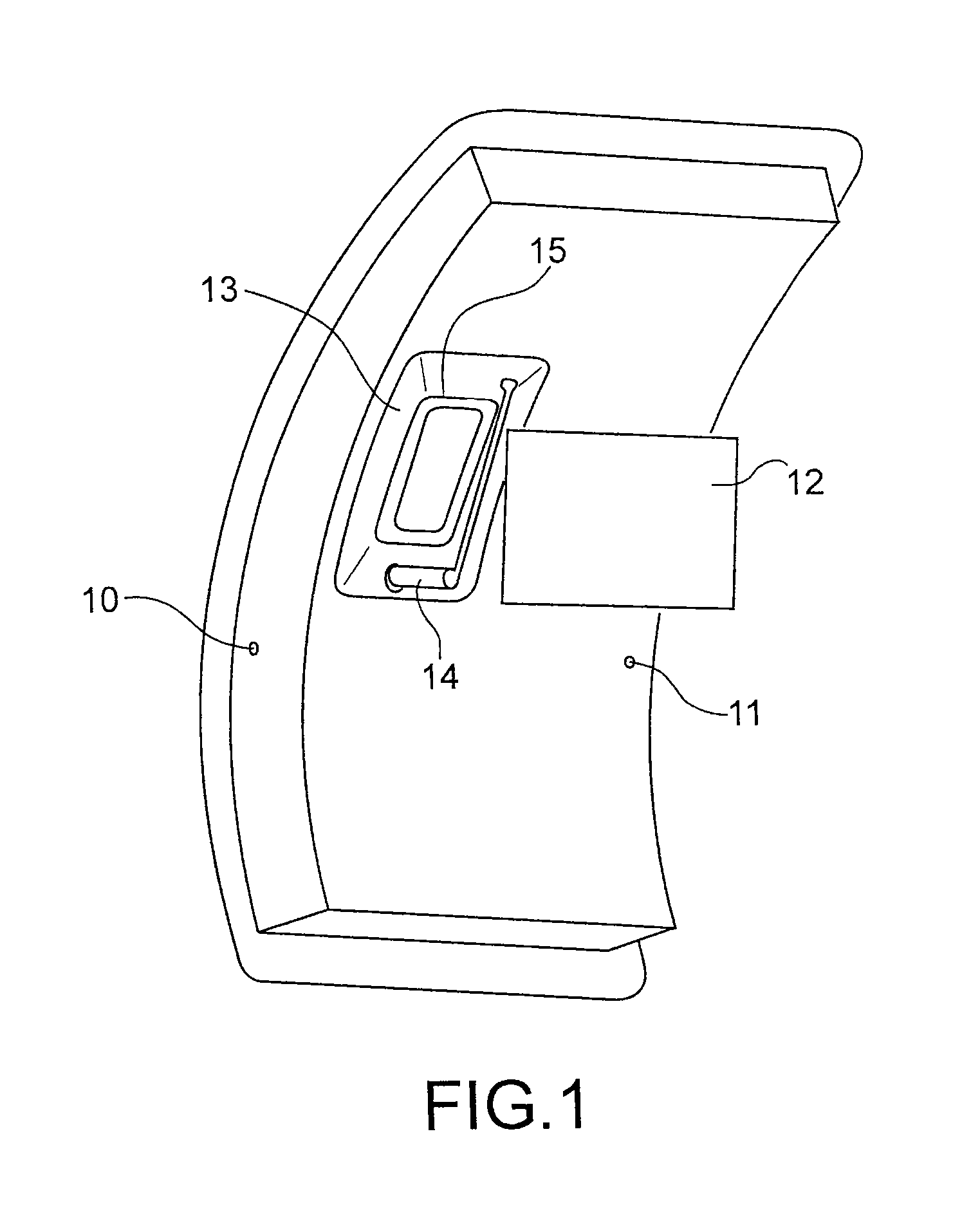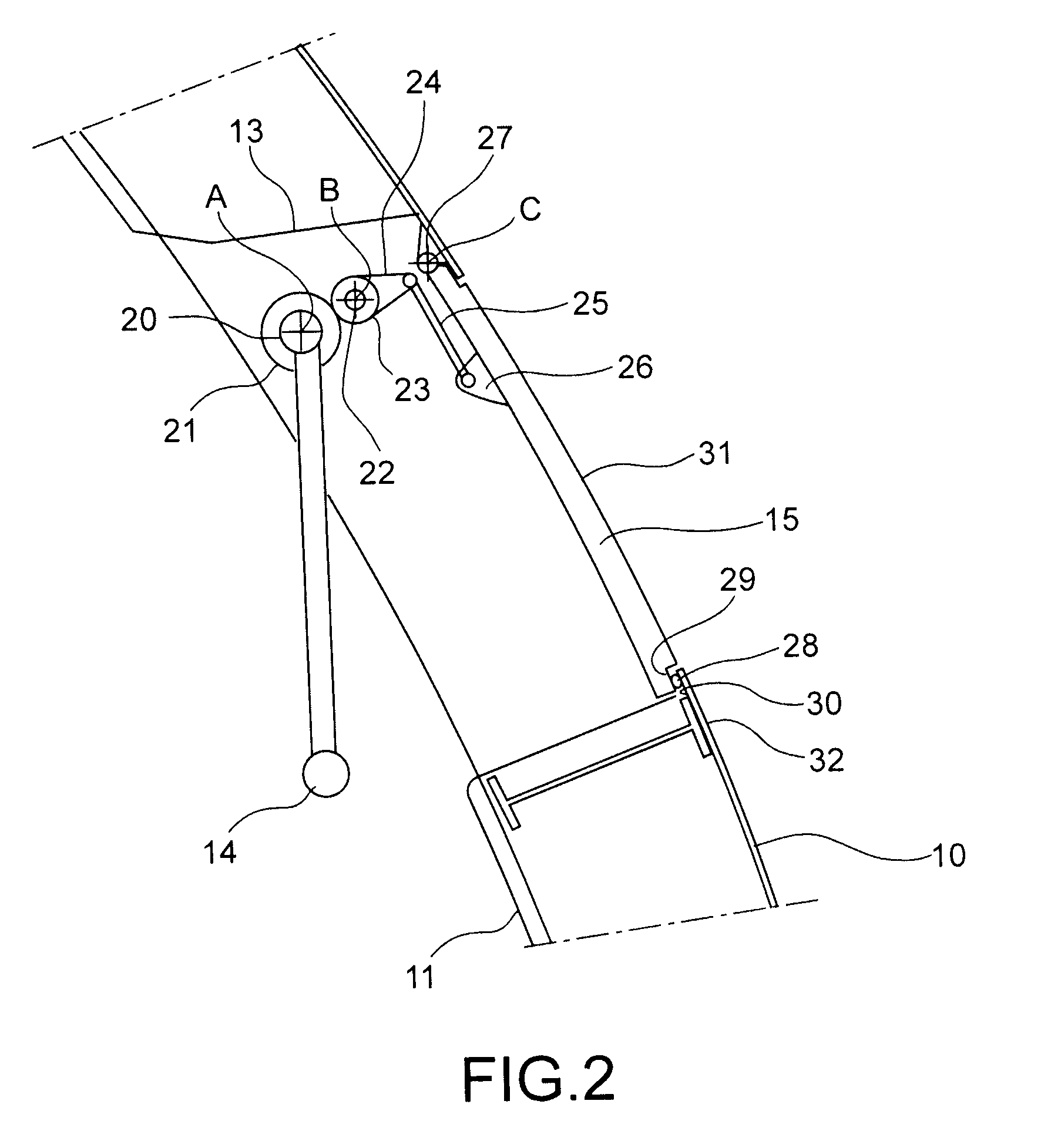Pressurised aircraft door equipped with a vent flap
a technology of aircraft doors and vents, applied in the field of doors, can solve the problems of introducing a particularly severe safety risk to the blocking device, the risk of the locking device being frozen, and the operation of this type of device is relatively complex
- Summary
- Abstract
- Description
- Claims
- Application Information
AI Technical Summary
Benefits of technology
Problems solved by technology
Method used
Image
Examples
Embodiment Construction
[0034]FIG. 1 diagrammatically shows an aircraft door more specifically intended for use by passengers to enter a pressurised aircraft. However, this type of door is only an example because as already mentioned, the invention is indifferently applicable to all types of aircraft entry or exit doors, regardless of whether these doors are intended for use by passengers, service personnel, baggage, etc.
[0035]The door shown in FIG. 1 comprises a single piece door structure denoted as reference 10, and a frame structure (not shown). An inside cladding 11 is provided that covers the door structure 10.
[0036]The door structure 10 comprises stops (not shown) on its lateral part that bear on facing stops connected to the frame structure, when the door is in its closed and locked position. This characteristic transfers pressure loads from the door structure 10 to the frame structure, and then to the aircraft fuselage. In other words, the stops formed on the lateral part of the door structure 10 ...
PUM
 Login to View More
Login to View More Abstract
Description
Claims
Application Information
 Login to View More
Login to View More - R&D
- Intellectual Property
- Life Sciences
- Materials
- Tech Scout
- Unparalleled Data Quality
- Higher Quality Content
- 60% Fewer Hallucinations
Browse by: Latest US Patents, China's latest patents, Technical Efficacy Thesaurus, Application Domain, Technology Topic, Popular Technical Reports.
© 2025 PatSnap. All rights reserved.Legal|Privacy policy|Modern Slavery Act Transparency Statement|Sitemap|About US| Contact US: help@patsnap.com



